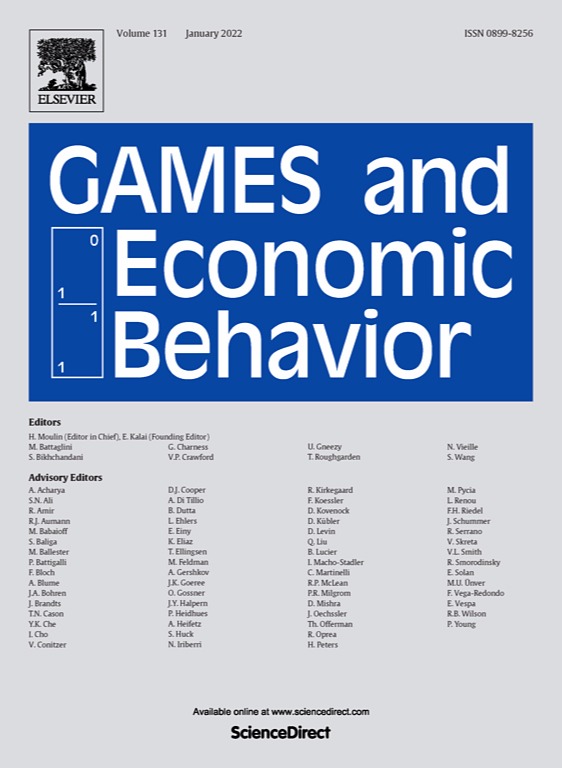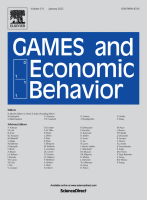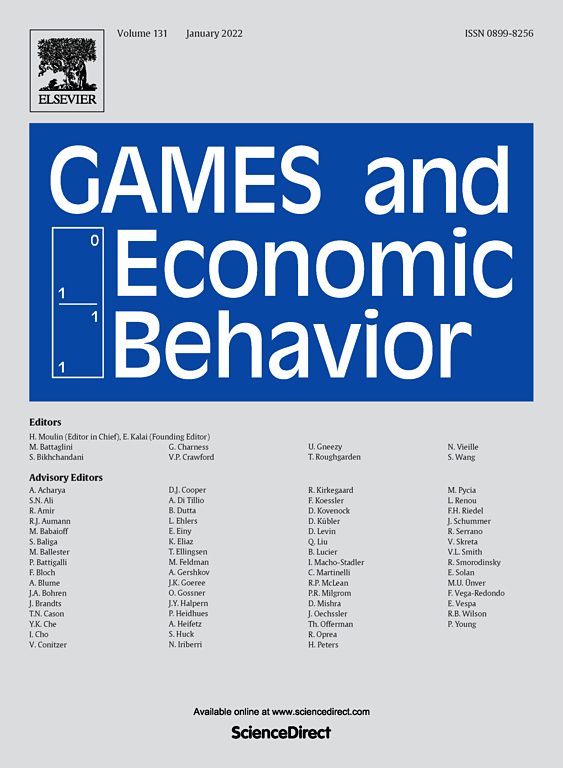


Games and Economic Behavior
Volume 132, March 2022, Pages 337-352
Winner-leave versus loser-leave in multi-stage nested Tullock contests
JingfengLua YuanzhuLub ZheweiWangc LixueZhouc
a Department of Economics, National University of Singapore, 10 Kent Ridge Crescent, 119260, Singapore
b School of Economics and Management, University of Science and Technology Beijing, Beijing, 100083, China
c School of Economics, Shandong University, 27 Shanda Nanlu, Jinan, 250100, China
This paper compares two procedures for allocating a sequence of fixed prizes in multi-stage nested Tullock contests. In a winner-leave (loser-leave) procedure, in each stage, the prizes of the stage are allocated to winners (losers) according to their ranks, and prizes in early stages are higher (lower) than those in later stages. Players who obtain prizes leave the contest and the others proceed to the next stage of competition. For both procedures, it is effort-maximizing to allocate one prize in each stage. Provided that the positive prizes in the sequence are homogeneous, the optimally designed loser-leave procedure generates higher total effort if and only if the number of positive prizes is lower than a threshold. If the positive prizes in the sequence are heterogeneous, then the loser-leave procedure may generate higher total effort, even if the number of positive prizes in the sequence is in the high range.
